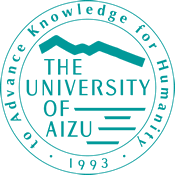By the end of this unit you should:

Check that you can answer to the following questions.
If you answered "no" to any question, you need to revise your thesis.

Check the truth value of each sentence in your thesis.

A systematic low-tech way is to write [ T ] after sentences that are true, [ F ] after sentences that are false and a question mark [ ? ] after sentences that may be true.
If you have any false sentences, these need to be rewritten. If you have any sentences that may not be true. consider:
Some supervisors are willing to check for factual accuracy, why not see if your supervisor is willing. Factual accuracy is paramount.
Use at least one spellchecker on all the text of your thesis.
The following is a list of popular spellcheckers. Students writing their theses in standard text processors, such as Microsoft word have easy access to spellcheckers. Students writing in LaTeX need to use an external spellcheckers. This is most easily done by copying the text from the pdf version.
Use at least one grammar checker on your thesis.
Run a grammar checker on your thesis. Do not simply accept every result, though. For each result, conside whether the gramamr checker result is a true positive (and so accept it) or a false positive (and so reject it).
There are many different grammar checkers. Here are some popular ones:
Copy and paste your thesis into this Error Detector. Act on any advice.
This tool can find many typical errors made by University of Aizu students. Your focus for the next month should be on writing the content and not worrying about minor errors. Near the end of the course, we can focus on reducing the five types of errors. Your new motto: content first, grammar last.
Check whether your thesis adheres to expected language conventions using the Feature detector.

Does your thesis stand out for the wrong reason?
If it quacks like a duck, it is a duck. If it reads like a thesis, it is a thesis. You want your thesis to stand out because the content stands out, not because your language is inappropriate.
Graduation theses and short research articles in the field of computer science have many similarities in terms of language usage. As a student or an early-career researcher, the general advice is adhere to those conventions. Your aim, therefore, is to write a thesis that reads like a thesis.
Some of these conventions include:
Check that you have followed the advice provided in the Typesetting instructions.
The typesetting instruction guide was originally written by Professor Julián Villegas to help students in the University of Aizu format their graduation thesis appropriately using LaTex. Many common errors are addressed. If you are writing your thesis in LaTeX, you are strongly advised to check that you have not made any of the mistakes detailed in the guide.
The guide, however, does not only provide valuable advice on some of the common errors that students make in LaTeX, but also provides advice on both language and formatting images.
Proofread your thesis, get someone else to proofread your thesis, and proof-listen to your thesis.
Proofread by yourself -- It is easy to fall victim to screen-memory interference. This is when you read the words you think you wrote, and not the words that are actually written. Some proofreading suggestions are given below:
Recruit a proofreader -- Ask someone else to read your thesis. They do not need to understand computer science (although it is better if they do), but they do need to be able to read in English! Ask peers, seniors, professors, relatives who can read English and anyone else you might help you.
The more feedback you receive the better. Remembr though, that not all advice you receive is useful or actionable. Always take care to thank each reader for sacrificing their time to help you!
Proof-listen -- It is difficult to proofread a document that you have altered so many times. Our brains naturally skip words and remember earlier versions. The speech synthesis engine built into Google translate is one of many speech engines that you can use.
Confirm with your supervisor whether the use of LLMs, such as ChatGPT is permitted. If so, create a suitable prompt and submit your thesis section by section. Remember that LLMs may make unwanted changes, so check each sentence carefully to ensure that the meaning is not inadvertently altered. You should look up the meaning of any words that you do not know.
Answer these questions.